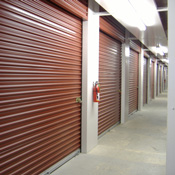Insulation is a major part of any construction project. Nowadays, there are many different options for industrial refrigeration panels in California for your company’s cold storage needs. Each option allows you to efficiently cool items with a high degree of precision. Find out how you can use refrigeration to provide the maximum benefit in an industrial setting.
The Basic Structure of an Insulated Panel
Structural insulation panels are some of the most commonly used building materials. These panels are made up of several different layers. Each layer is bonded to the next to resist temperature changes. In most cases, the layers will be separated by insulation products. Usually, this consists of polystyrene foam, polyurethane foam, or composite honeycomb. It is also likely that the insulation will be some sort of composite of these materials.
The structural materials of the panel can be made of many different materials. Some of the commonly used materials include:
- Wood
- Oriented strand board
- Cement
- Steel
- Magnesium oxide board
Sometimes, these panels are used to form a wall. In other cases, conventional building components are used. In the large majority of industrial settings, insulated panels are layered on top of the existing drywall. This is especially beneficial when setting up a cold storage system.
The Uses of Insulated Paneling
The first way that insulated panels can be used is in a warehouse setting. Some warehouses need to stay at a cold temperature to protect the products inside. The challenge is that the entire rooms will need to maintain a certain temperature. This can be hard to do without insulated panels. Therefore, these panels are put in to place to keep cold air from escaping.
Next, insulated panels can be used in the basic refrigeration process. Practically all walk-in refrigeration units are supported by industrial refrigeration panels in California businesses. These set-ups are most commonly used in food preparation plants.
Finally, refrigeration panels are often placed in commercial buildings. The large spaces inside of commercial buildings present a challenge to a cooling system. Insulated panels help maximize the retention of cool air to keep costs at a minimum.



